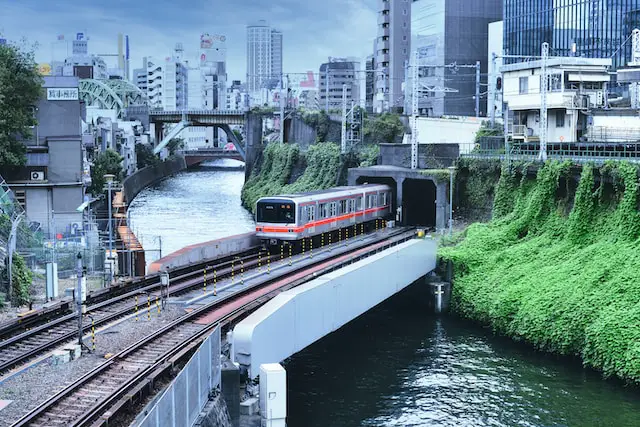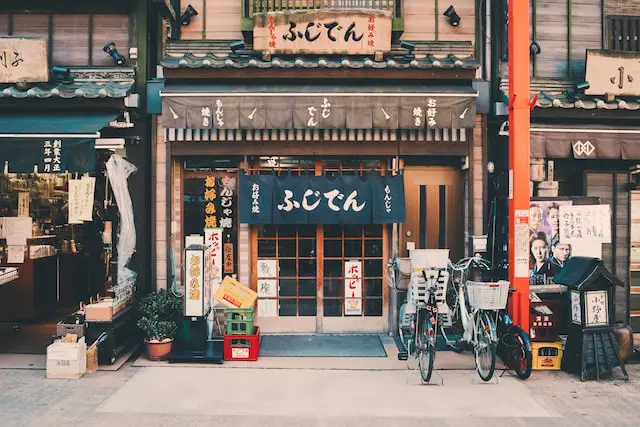Japan is renowned for its astounding urban efficiency, an integral part of which is the comprehensive and sophisticated Japanese train system. It’s an extensive, interconnected network of railways that serves as the lifeblood of transit in this dynamic country. From sprawling cities to tucked away villages, there’s hardly any place the trains in Japan can’t take you.
Understanding the intricate machinations of this train system isn’t just a requirement for navigating Japan, it’s turning to a part of the cultural fabric. Whether you’re a fresh-faced tourist drawn by the alluring mix of the old and new, or a long-term resident fully immersed in the Japanese lifestyle, mastering the railway system is critical. So, fasten your seatbelts because this post is about to become your new compass, providing essential Japan travel tips. Let’s set off on a journey through the beating heart of Japan’s transport system!
Understanding Various Types of Trains
Japan’s railway network is complex yet efficient, making trains in Japan crucial to the lives of residents and tourists alike. Each type of train serves a unique purpose and offers varying speed, pricing, and stopping patterns.
First up is the ‘bullet train’ or the Shinkansen. These high-speed trains (run up to 320 km/hr) are a symbol of efficiency and technology. Shinkansen lines connect major cities, making travel fast and comfortable for long-distance journeys.
Still want speed, but on a shorter route? Look no further than the Express or Limited Express trains. Although these are slower than Bullet trains in Japan, they are significantly faster than local trains, halting only at major stations.
Local trains, on the other hand, stop at every station along their route. They are perfect for short-distance travel or exploring off-the-beaten-path destinations.
Each of these trains operates not only on speed but also on punctuality, ensuring that you reach your destination within the promised time. Understanding the services each provides is your first big step in navigating the Japanese train system like a pro! In the next section, we’ll further explore how Japan train maps and station signs can ease your journey.
Deciphering Train Maps and Signs
One intriguing aspect of traveling in Japan is mastering the art of navigation, particularly when it comes to understanding the trains. The Japanese train system, one of the most sophisticated in the world, heavily relies on clear train maps and signs for smooth functioning. Whether you’re in bustling Tokyo or serene Kurashiki, mastering train maps and signs can mean the difference between a comfortable commute and a frustrating trip.
To aid international travellers, most signs in the train station are bilingual, featuring both Japanese and English. Station names, exit names, and important direction signs all have English translations. Moreover, some busy stations even utilize color-coding on their maps for easier navigation. Always ensure to look for English or bilingual signboards when navigating Japanese train stations.
When reading the train maps on large boards in the station, take note that shinkansen (bullet trains) and regular train lines have separate maps. Each map indicates different types of trains, the respective stops, and the direction of travel. Trains with dotted lines typically refer to the local or slower trains, while solid lines represent express trains. Remember, understanding these details about Japan’s train maps will make your travel experience much smoother.
Despite the initial seeming complexity, overcoming the challenge of deciphering maps and signs is part of the beauty of traveling in Japan. It offers a chance to pause, absorb, and connect more profoundly with the Japanese lifestyle and culture. So, don’t be afraid to dive in and start navigating that ‘Japan train map’ like a local!”,
Purchasing and Using Tickets
If you’re planning to dive into the vibrant city life or perhaps unearth the historic gems nested in Japan’s countryside, understanding how to purchase and use train tickets is a crucial aspect of your journey.
To begin with, tickets can be purchased either from ticket vending machines found at any station or from an online platform. The machines can be slightly daunting to first-timers, but don’t fret! They offer instructions in multiple languages, including English. Here’s a simple breakdown: select your destination, choose the appropriate fare, insert the money, and voila, you’ve got a ticket for your journey.
If you desire a smoother, more convenient experience ‘buying train tickets in Japan’, consider using Pasmo or Suica IC cards. These rechargeable cards can be topped-up at the same vending machines mentioned above. Once you’ve added credit, all you need to do is tap the card on the reader at the gate of the station. This eliminates the need to buy a ticket for every journey, making your travel experience seamless and hassle-free.
If you’re wondering ‘how to use Pasmo’ or ‘how to use Suica’, remember it’s as easy as tap and go! Plus, these cards can be used at convenience stores and several other establishments across Japan, making them more than just a travel card.
In summary, understanding the ticketing system can significantly enhance your comfort and efficiency while discovering the wonders of Japan by train. So grab your ticket or IC card and get ready to embark on an unforgettable journey!
Navigating Transfers and Platforms
Further enhancing your adventure onboard the trains in Japan would necessitate a clear understanding of how to master transfers between different train lines and finding the correct platforms.
Understanding ‘train transfers in Japan’ might appear overwhelming at first, but don’t fret! Most transit maps include handy color-coded lines, each corresponding to a different route. Look for your desired destination, track back to your current location, and plan your transfers accordingly. If in doubt, don’t hesitate to ask the friendly station staff. Remember, the goal is to smoothly navigate these transfers, enhancing your overall travel experience.
Finding the platform for your departing train is no less crucial. Large stations often feature numerous platforms, each housing a specific line or direction. Upcoming train details, including their destinations and departure times, are clearly displayed on electronic signs. For an even smoother transition, try to arrive a few minutes before your departure time. This headstart provides an excellent buffer for uncalculated delays or last-minute changes, ensuring an uninterrupted journey.
Once you’ve located the correct platform, it’s essential to understand ‘how to find train platforms in Japan’ also involves the knowledge of proper queue manners. With lines clearly marked on the station floors, passengers are expected to lineup orderly, allowing alighting passengers to step off the train first. These simple etiquettes contribute significantly to maintaining efficiency within the bustling ‘Japanese train system’.
Mastering these small yet significant aspects not only makes your journeys smoother but also helps you ‘navigate Japan like a local’, truly enhancing your travel experience.
Appropriate Train Etiquette in Japan
As part of your Japanese adventure, understanding and respecting the Japanese train etiquette is essential. Here, silence is golden and embracing this unwritten rule won’t just make you blend in, but also ensures a peaceful journey for all aboard.
Speaking loudly on the phone, consuming large meals, or playing loud music can be frowned upon. For a pleasant travel experience on Japan rush hour trains, it is advisable to keep phone conversations to a minimum, use headphones when listening to music, and, if possible, eat your meals before boarding.
Another major point is understanding priority seating. These specific seats are typically reserved for elderly passengers, passengers with disabilities, pregnant women, and individuals with small children. Should one of these passengers board, it’s common courtesy to offer them your seat.
In addition, navigating the infamous rush hour can seem daunting but is quite manageable. Rush hour usually peaks between 7:30-8:30 am and 5:00-6:30 pm. During these times, trains can get tremendously crowded. Fitting in can be as simple as following what others are doing and moving efficiently to allow others to board.
Last but not least, always stand on the left (or right depending on the region) on escalators, allowing those in a hurry to pass by. This once again shows respect for others and keeps the flow of traffic moving smoothly.
So, when you jump aboard your next train in Japan, you can be mindful of these etiquettes and navigate the system like a pro!
Helpful Apps and Resources
For the savvy traveller, mastering the ‘Japanese train system’ is made easier with the use of a handful of invaluable tools. Many free and easy-to-use apps and websites can take the guesswork out of navigating ‘trains in Japan’. The following platforms will be your essential companions as you move seamlessly from city to city.
Hyperdia is a top choice, highly recommended for its detail and accuracy. It provides train timetables and journey times, helping you plan your trips with all the relevant information. Adding to its usefulness is its ability to filter by ‘Shinkansen’ or ‘Japan express trains’ to tailor your journey to your specific needs.
Google Maps isn’t strictly Japan-specific, but it never fails to impress with its accuracy and ubiquity. It shows the ‘Japan train maps’ at any given time, platform information, and also the price of your journey. Google Maps is even capable of showing delays in the train schedule; a must-have for those tight on time.
If you’re looking for an authentic ‘Japan travel experience’, the Japan Official Travel App can be your comprehensive companion. This app not only includes transport information but also provides plenty of local tips, travel articles, and multi-lingual support for an immersive experience.
In summary, you can reduce the complexity of the ‘train transfers in Japan’ or further ‘navigating Japanese train stations’ by having these three handy resources. Remember, knowledge is power — and in this case, the passport to an exciting and efficient travel journey in the Land of the Rising Sun!
Conclusion
Navigating the vast and efficient Japanese train system may initially appear daunting, particularly to newcomers. Whether you’re vying for a spot on the rapid bullet trains in Japan or gingerly attempting to decipher the unruly tangle of Japan train maps, each moment is part of the unique Japan travel experience.
However, by now, we hope the barriers appear less insurmountable. Understanding the nuances of Shinkansen, local, express, and limited express trains, combined with mastering the art of buying train tickets in Japan and train transfers, escorts you one step closer to experiencing Japan like a local.
Crucial to the experience, too, is graspring the intricate Japanese train etiquette. As we learned, manners such as maintaining silence and yielding priority seats isn’t just considerate, it’s ingrained into the fabric of Japanese society.
And remember, you are not alone on this journey! In the digital age, numerous resources stand ready to assist you. From the intricacy-navigating Hyperdia app to the trusty Google Maps Japan, these tools eliminate guesswork and ensure a smoother travel.
So go forth, embrace the challenge and savour the experience. Each train ride, a frame of your Japan adventure, a story, is waiting for you. We hope our guide serves you well. In immersing in the rhythm of their train culture, there lays the magic of truly navigating Japan like a local.
Safe travels and enjoy your journey across this beautiful country.




